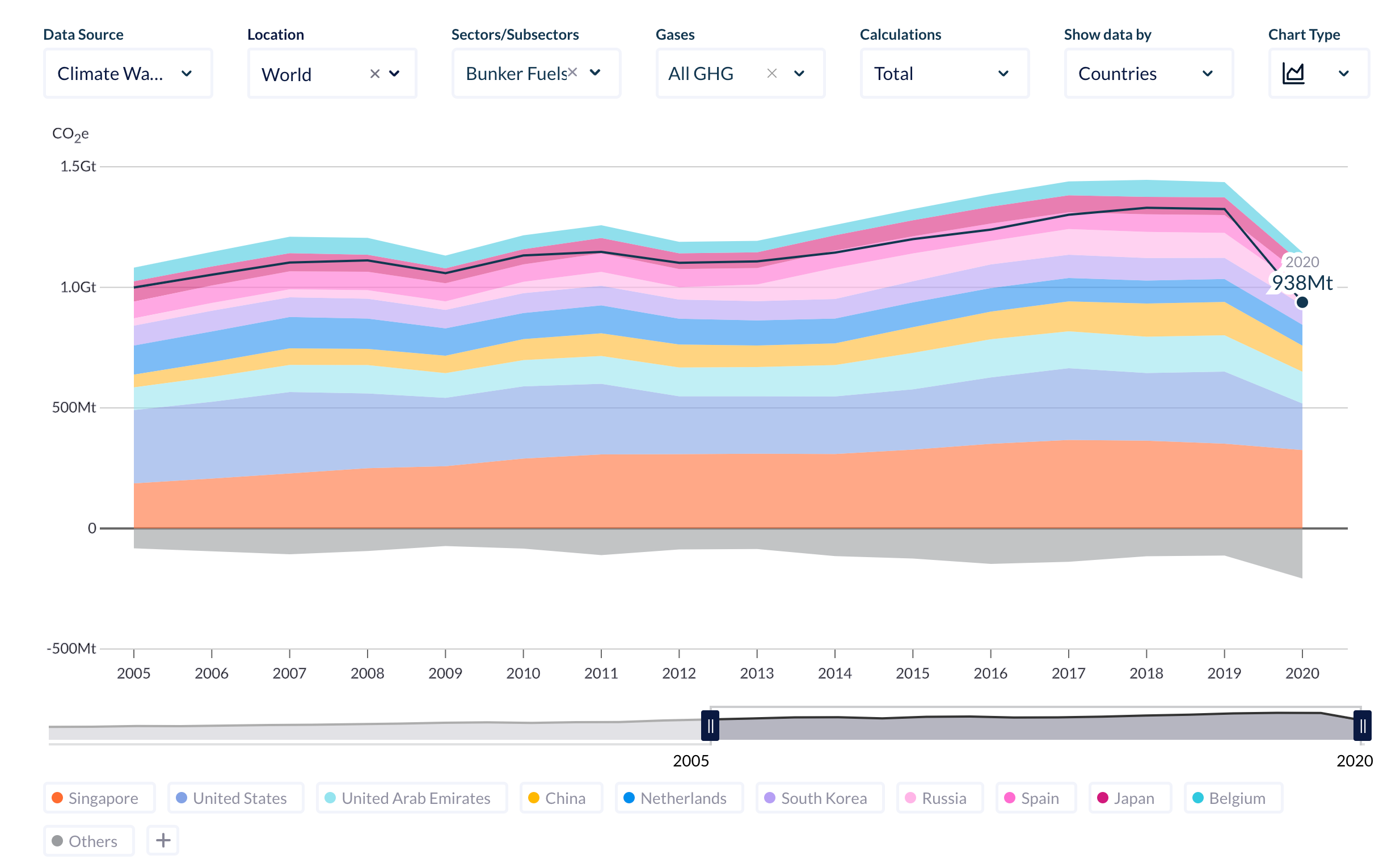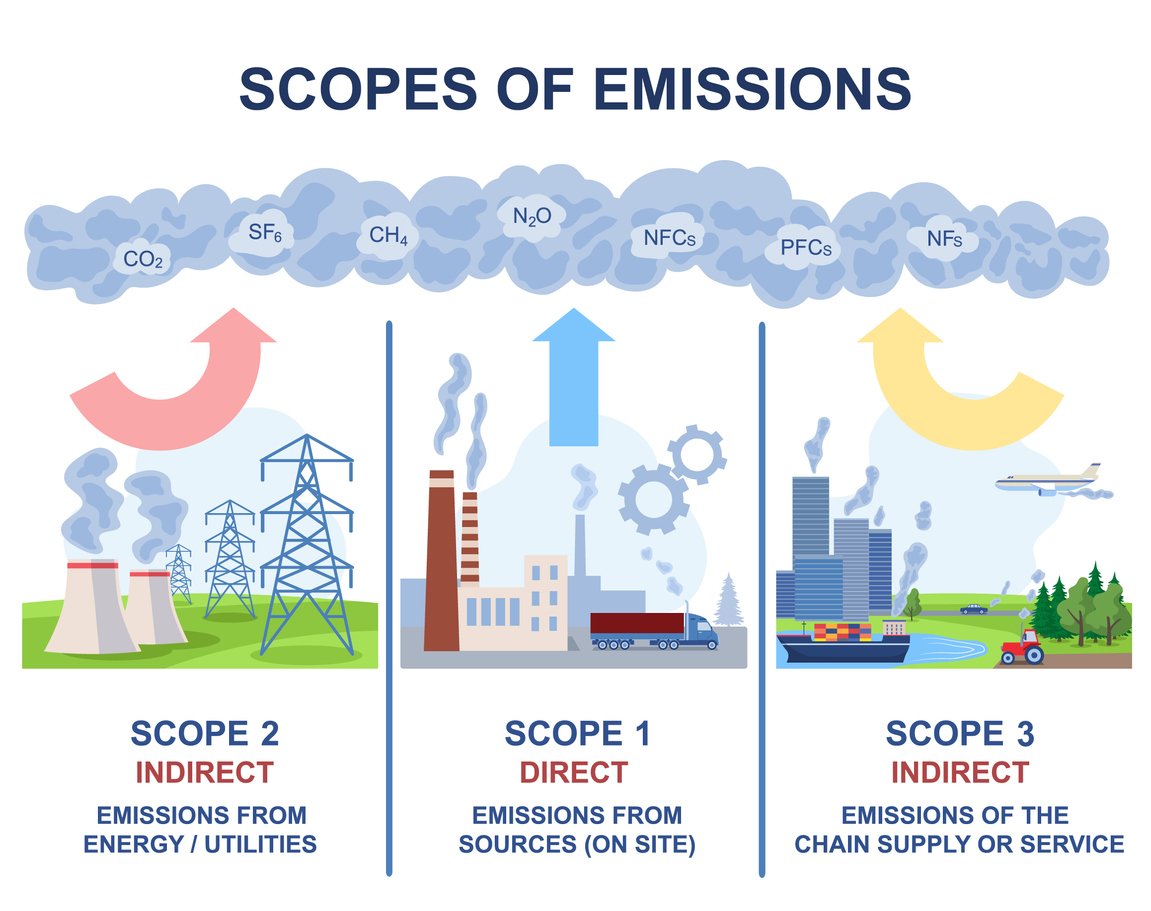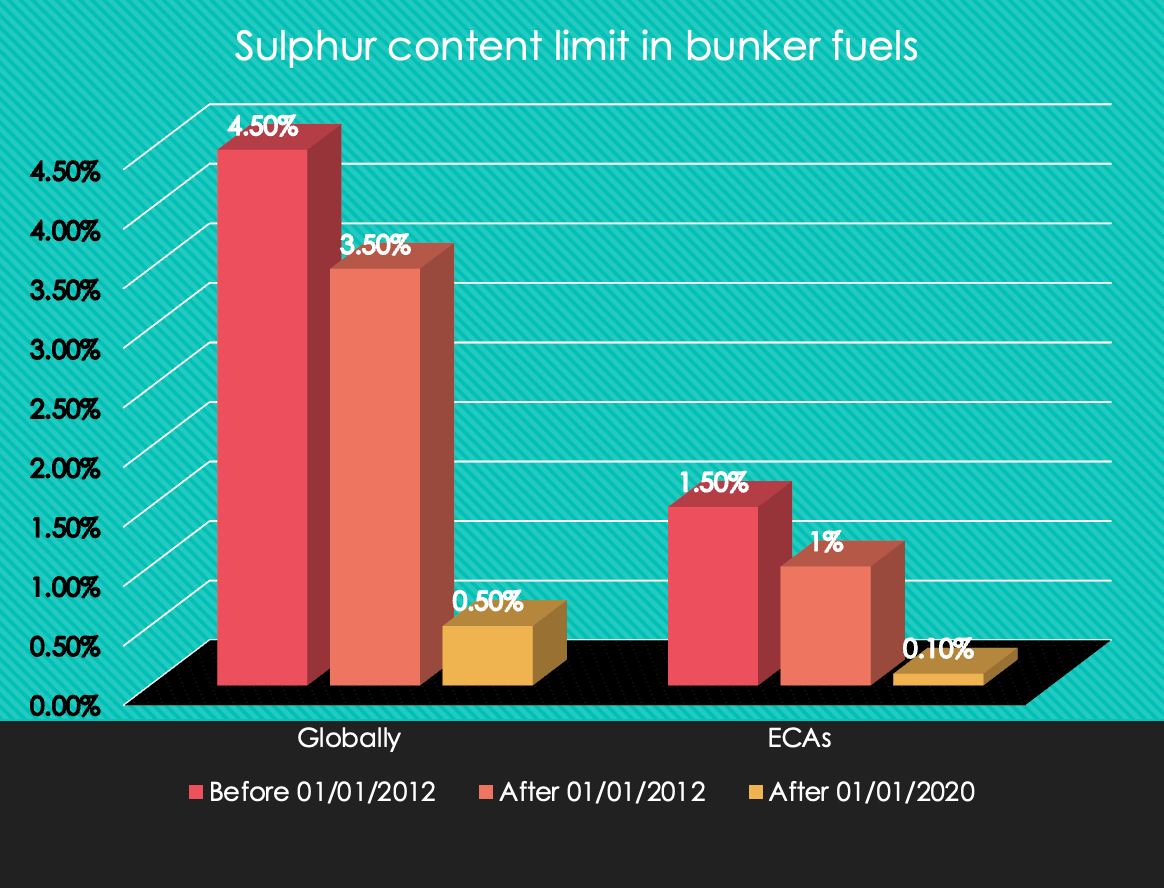Introduction
Climate change is a grim reality today. Due to the rise in global temperatures, we are seeing effects such as hotter temperatures, increased drought, severe storms, loss of species, and health risks. As a result, there is a global shift among all industries to operate more responsibly.
Maritime transportation has been at the forefront of this shift. In the past 20 years, IMO, the regulating body of international shipping, has set ambitious goals and made great efforts to achieve them agreeably for all stakeholders. It continues to set future goals that will drastically reduce the contribution of shipping to climate change.
In this article, we are going to explore the role of greenhouse gases in global pollution and how shipping plans to manage it for a sustainable future.
What are greenhouse gas emissions?
Greenhouse gases are gases that transform the earth’s atmosphere into a greenhouse. Greenhouses are transparent enclosures that admit sunlight and heat but do not let it escape. They are especially useful in cold weather conditions to retain heat for plant growth.
Greenhouse gases also act the same way. They accumulate in the earth’s atmosphere and trap the sun’s heat, preventing it from exiting back to space. Thus, over a certain period, the heat accumulates in the earth’s atmosphere increasing the average temperature everywhere.
Some concerning greenhouse gases in shipping are carbon dioxide, methane, nitrous oxide, and hydrofluorocarbons. There are also other gases such as perfluorocarbons, sulphur hexafluoride, and nitrogen trifluoride but they do not find use in the maritime transportation industry. All of these gases are popular contributors to the global warming effect.
All of the above gases come from a variety of sources: both natural and manmade. To reduce their impact on the earth’s atmosphere, we need to reduce their emissions from as many sources as possible.
Measures in the shipping industry against greenhouse gas emissions
Over the years, the shipping industry has actively identified and placed controls to reduce greenhouse gas emissions. As a result, ships have considerably reduced their contribution to greenhouse gas emissions. In this section, let us take a look at some popular sources of greenhouse gases in the shipping industry and how they are being mitigated.
Carbon dioxide
Carbon dioxide is one of the least potent greenhouse gases but the sheer scale at which it is released makes it an important greenhouse gas for control measures. Unlike other gases, carbon dioxide is also absorbed to some extent in the atmosphere. Thus, its lifetime in the atmosphere can range from a few days to thousands of years depending on its location.
In the shipping industry, carbon dioxide is released from the use of fossil fuels that propel and power a ship. The primary means of reducing emissions is to reduce the quantity of fuel used onboard. This can be achieved through a variety of measures. These are as follows:
Slow steaming:
Slow steaming refers to the deliberate reduction in speed of the vessel to reduce fuel consumption and associated emissions.
Route planning optimisation:
It is possible to lower fuel consumption by optimising travel routes for ships to take advantage of favorable currents and winds and steer clear of their unfavourable counterparts.
Use of renewable or cleaner sources of fuel:
The movement to use renewable sources of energy is gaining momentum as it gives the promise of reduced fuel consumption and cost.
Stricter legislation:
The IMO has introduced strict targets that the shipping industry must achieve gradually. Factors such as the carbon intensity indicator (CII) and energy efficiency existing ship index (EEXI) will get stricter each year nudging ship owners towards reduced emissions over a comfortable period.
Methane
Methane is opposite to CO2. While it is released in very small quantities compared to carbon dioxide, it is a lot more potent. The primary means of methane emissions in shipping are the fuel consumption in all ships and boil-off gases released from Liquid Natural Gas (LNG) ships. There is also something known as methane slip which is a shortcoming of LNG-fueled engines.
Measures are underway to eliminate or at least reduce the slip from engines by engine manufacturers. They are exploring measures such as reduction of crevice volume, direct gas injection, and aftertreatment solutions. All of the above measures will reduce methane emissions considerably.
Nitrous oxides
Fresh air contains 78% Nitrogen. When ship engines combust fuel using the atmospheric air, it leads to the formation of Nitrous oxides (NOx) at high temperatures.
Nitrous oxides are potent greenhouse gases. When they rise in the atmosphere, they react with the ozone layer and contribute to global warming. To meet emissions reduction targets for nitrous oxides, the shipping industry has taken the following measures:
-
Implementation of regulations suggested by MARPOL 73/78 for NOx emissions reductions by 20% for all marine engines built after 2016 with power values greater than 130 kW.
-
Installation of scrubber systems that clean the exhaust gas of Nitrous oxides before they are released into the atmosphere.
-
Reduction of peak temperatures during combustion by injection of water and steam to reduce NOx formation.
-
Installation of Exhaust Gas Recirculation (EGR) systems to reduce the combustion temperatures.
-
Installation of Selective Catalytic Reduction (SCR) systems to reduce emission levels of PM and NOx to near zero levels.
In addition to air pollution, nitrous oxides can also cause the acidification of water bodies making them more hazardous than other greenhouse gases.
Sulphur oxides
These oxides also have a strong greenhouse effect like nitrous oxides. Sulphur is naturally present in the crude oil from which we obtain the heavy fuel oil used in marine engines. When fuel oil containing sulphur combusts in a marine engine, it forms sulphur oxides that are then released into the atmosphere through the exhaust gas.
In addition to global warming, sulphur dioxides are also linked to the acidification of oceans and acid rain. The following measures have been implemented to reduce emissions of sulphur dioxides from ships.
Use of low sulphur fuels:
Progressively, over the years, the IMO has reduced the acceptable limits of sulphur present in fuel oils. As per the latest regulations rolled out in 2020, the sulphur content in marine fuel oil should not exceed 0.5% globally and 0.1% in Emission Control Areas (ECAs).
Installation of closed-loop gas scrubber systems:
These systems clean the exhaust gas of sulphur oxides. A point that needs to be noted here is that sulphur and nitrous oxides form sulphuric and nitric acid respectively upon contact with water. These acids are lethal even at low concentrations and require careful handling.
Conversion of marine diesel engines to LNG engines:
This initiative eliminates the need to use low sulphur fuels leading to SOx emissions reductions.
Optimisation of cylinder lubrication:
By optimising the cylinder lubrication, partial SOx neutralisation can occur in the combustion chamber itself reducing emissions.
Hydrofluorocarbons HFCs
Hydrofluorocarbons (HFCs) are compounds used as refrigerants on ships and ashore. They started as a replacement for the hydrochlorofluorocarbons (HCFCs) which had serious ozone-depletion potential. HFCs do not harm the ozone layer as they lack chlorine atoms. But they do have a global warming potential and are among the fastest growing greenhouse gases globally.
The Fluorinated Gas (F-gas) regulation (517/2014) entered into force on 1st January 2015 to reduce the use of HFCs onboard ships. The target is to reduce HFC usage by at least 79% by 2030. This regulation applies to all EU countries and EU-flagged vessels.
Several gases come under the umbrella of HFCs. Their ability to cause global warming is judged by a score known as the global warming potential (GWP). This score is the multiple of how many kgs of CO2 would contribute to global warming similarly. For instance, an HFC with a score of 5000 GWP indicates that 1 kg of this HFC gas would contribute to global warming effects similar to 5000 kgs of CO2.
The following measures are in place to control and reduce HFC usage on ships.
Use of alternative refrigerants:
Almost all refrigerants have some Global Warming Potential (GWP). By switching to a gas with a lower GWP, we can reduce the impact on the environment. For instance, by replacing R-404A (GWP 3922) with R-407C (GWP 1774) we can reduce the global warming effects by almost 55%. Here’s a link to review the GWP of different HFCs.
Service ban on HFC systems:
The EU has initiated a service ban for HFC systems above a certain threshold. The service ban prevents the maintenance of new and existing systems.
Monitoring and fixing of leakages:
::The F-gas regulation will control unintentional leakages by having mandatory testing requirements for HFC-based systems. Upon identification and rectification of a leakage, the system must be rechecked within a month to ensure that the repairs were effective.
HFC recovery during maintenance and decommissioning:
The regulation ensures that the HFC gas is collected instead of being released to the atmosphere during maintenance and when the system has reached the end of its lifetime.
Conclusion
These are some of the ways that the shipping industry is working to eliminate and reduce greenhouse gases. The industry is also exploring renewable energy concepts such as wind energy to avoid burning fossil fuels as they directly contribute to emissions.

Global annual GHG emissions report from Climate Watch Data and CO2 Emissions from Fuel Combustion, OECD/IEA, 2022
Global greenhouse gas emissions are on a steady decline as per the latest data. This shows that the efforts are seeing a degree of success. Measures will become stricter with time to continue the momentum and reach the goal of zero greenhouse gas emissions within acceptable timeframes.



Leave a Reply